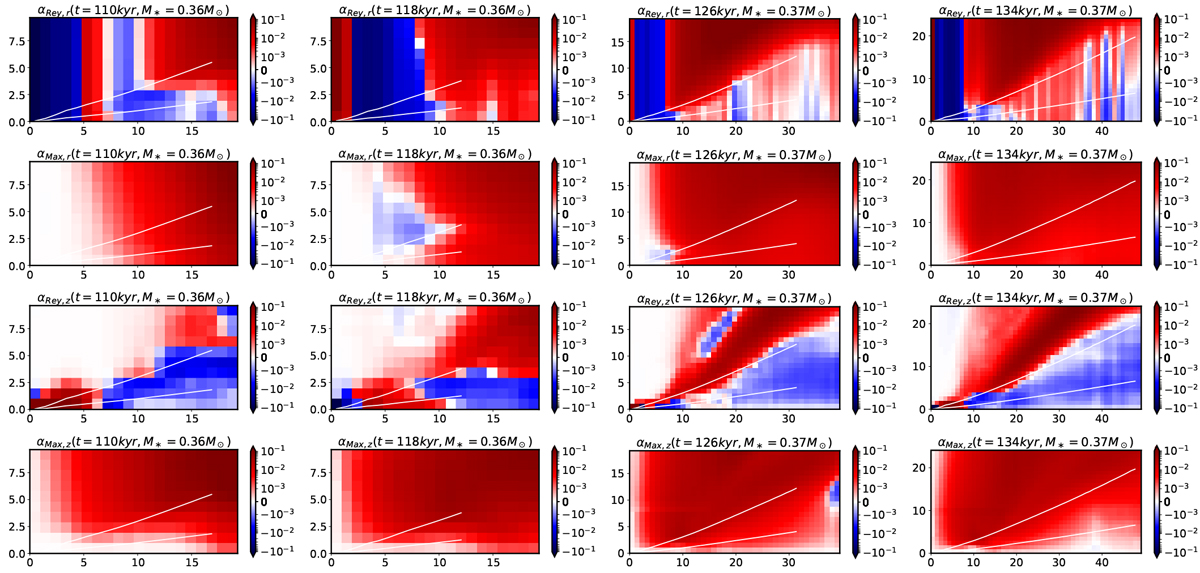Fig. 15

α evolution of R_ℓ14 (increasing time from left to right). The four components αRey,r, αMax,r, αRey,z, αMax,z (from top to bottom). The r components are vertically averaged values between zero and a given altitude, and the z components are local values. The white curves trace the thermal scale height H and 3H. Positive values (red) can be roughly interpreted as a radial accretion, and negative values (blue) as radial expansion. The resolution is 1 AU. As the disk grows in size, the interior of the disk is described with more cells and there is a clearer pattern of α. The early disk has relatively strong αRey compared to its magnetic counter part. It is probably under constant perturbation by the strong infall from the envelope. The first two chosen snapshots are not necessarily representative of this epoch because the behavior of αRey is very irregular in time, leading to a disk that fluctuates in size around 10 AU. The infall from the envelope weakens later, and the disk becomes more regular, with its inner parts readily accreting. This accretion is mostly caused by vertical magnetic transport of angular momentum within the envelope.
Current usage metrics show cumulative count of Article Views (full-text article views including HTML views, PDF and ePub downloads, according to the available data) and Abstracts Views on Vision4Press platform.
Data correspond to usage on the plateform after 2015. The current usage metrics is available 48-96 hours after online publication and is updated daily on week days.
Initial download of the metrics may take a while.


